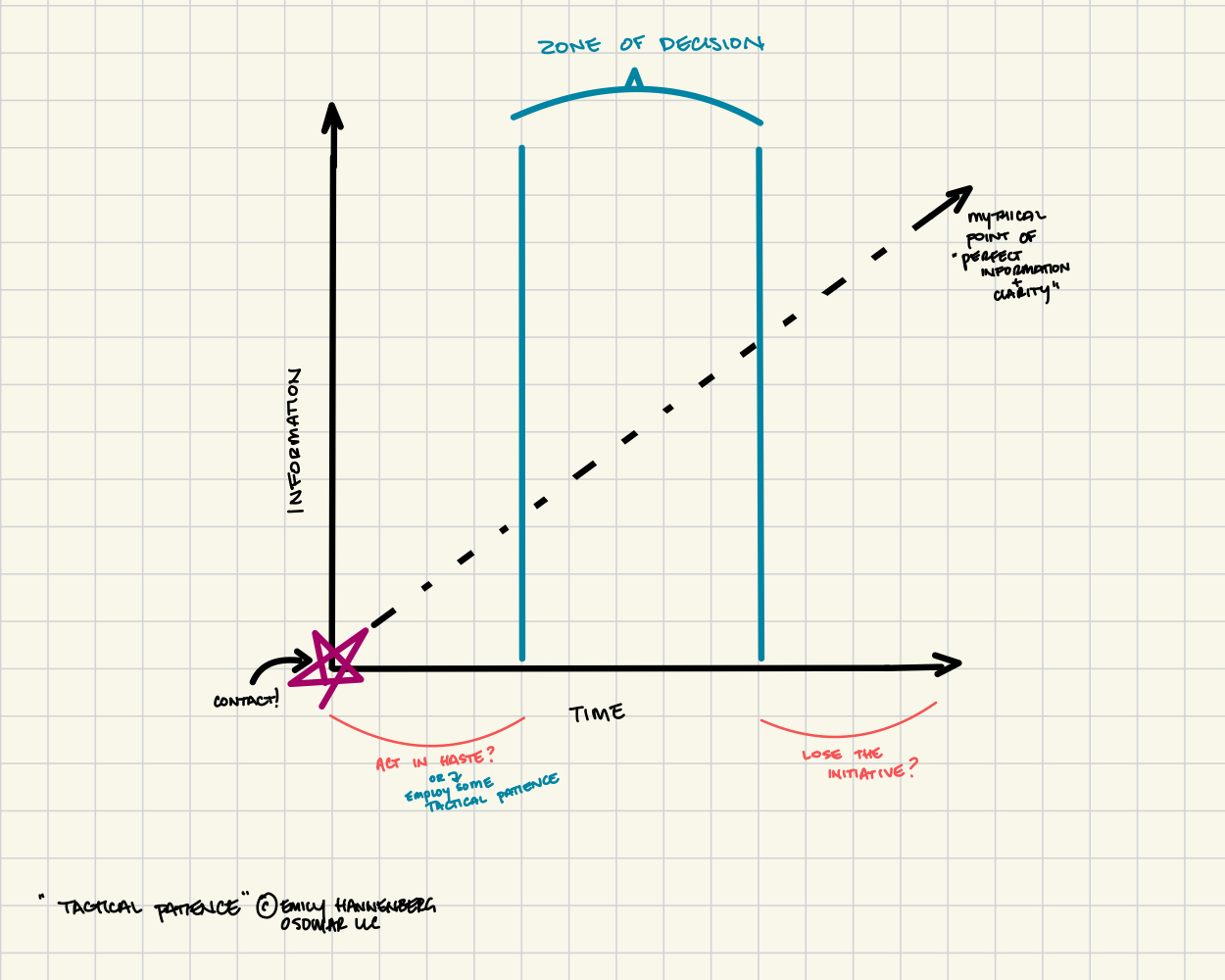As leaders, our teams look to us for many things, including decisiveness and to share direction, purpose, and motivation with them. Often we find ourselves making decisions with imperfect information, in chaos, and amidst uncertainty - said another way, we find ourselves operating and making decisions in a VUCA environment.
Imagine for a moment that you are leading a small team in a combat zone. All of a sudden, BOOM, an enemy element starts shooting at you. At that instant all you know is that you’ve made contact with the enemy. You don’t know how many of them there are, where they are relative to you, what they are armed with, if any one on your team has been hit. As time passes and the engagement continues you’ll get more information and it will happen fast - a team member will shout out the distance and direction of the enemy, you will hear a few more enemy rounds go off and you’ll get sense for what weapons system they might be using, you’ll call for a status report from your team to see if anyone has been injured. Imagine that you continue to let time pass - more information comes in, you get a clearer and clearer picture of what is going on, but the enemy is gathering information too and, building on the element of surprise, they continue to seize the initiative, the advantage, and in your effort to get a perfectly clear picture, you have decidedly lost the tactical advantage and probably lost a great deal more. While it’s clear in this example that waiting too long to decide and act has its costs, so does acting rashly. If you had immediately moved your team with zero actionable information, you would be making a rash, knee jerk decision and likely exposing your team to undue risk or deploying them in an ineffective direction.
This example is a bit hyperbolic for most business decisions - no one is getting shot at, but the fundamentals remain the same. Acting immediately without actionable information can be costly, and waiting for the mythical accumulation of perfect information can be costly. Employing some tactical patience is sometimes necessary to let the situation develop and we have to use our best judgment for where that zone of decision is for us and our team in context.
Above is a visual to illustrate the concept of tactical patience. I offer it as a framework, a heuristic - and like all frameworks the power is in making it your own and applying it to your context. You will have to decide how much tactical patience is warranted in a given situation. Ideally, this frame will bring some awareness to your default decision making mode as a leader. Maybe you tend to make decisions immediately and often find yourself or your team reworking and redoing work based on information that comes in shortly after you made your decision - what would it be like for you and the team to move a little further right on the horizontal axis and use some tactical patience, let the situation develop just a bit more, and then decide? Or, perhaps you notice your default is to put off decision making, even slipping into analysis paralysis or avoidance rather than making a decision. What would it be like for you to push through the discomfort a bit and pull yourself left on the horizontal axis, making a decision a little sooner?
Another way this concept and visual can serve you is in communicating with your team about where you are in the decision making process. Shared language around tactical patience, gathering necessary information, letting the situation develop, and the necessity of acting before initiative is lost can help align the team and increase transparency, which can be particularly empowering and comforting amidst uncertainty.
Even if it’s not decision making in full-blown chaos - one of our core responsibilities as leaders in all contexts is making the call and information is never perfect. I hope the concept of tactical patience supports you in making your next decision and communicating with your team about where you are in your decision making process.
Onward,
Emily
About this newsletter: A Human Endeavor is a newsletter that I write about leadership - it is imperfect. For me, it is an exercise in reflection, clarification, sharing, learning, growing, and being of service to others.
Thank you for reading.
If you are interested in exploring 1:1 Leadership Coaching with me or a leadership development workshop for your team - I’d love to chat with you. Please reach out to me at emily@osomar.com or you can use this link to find some time.




